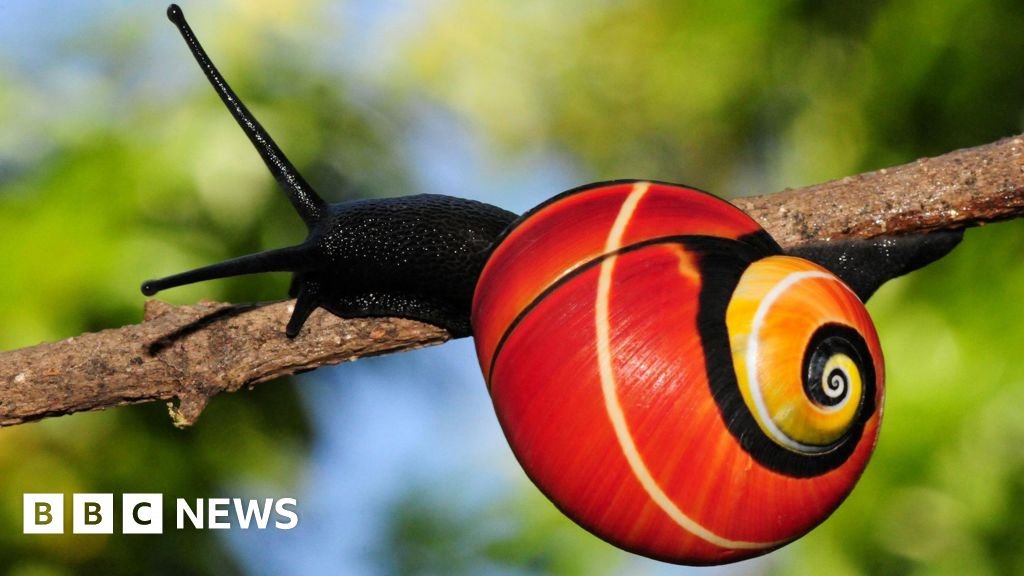
Mission to save the ‘most beautiful’ snail in the world
Representative of Science, BBC News

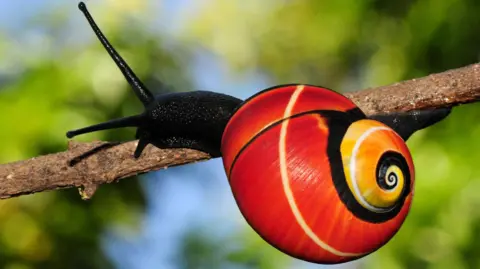 Bernardo Rage-Tur
Bernardo Rage-TurResearchers have launched a mission to save some of the world’s most beautiful snails and save their biological secrets as well.
Polymita trees that are disappearing from their native forests in East Cuba are snails, which have volatile, colorful and extraordinary patterned armor.
Unfortunately, they are desirable for the shell collector, and the conservation experts say that the shell is pushing the business towards the snails.
Biologists from Cuba and experts at the University of Kauta in the UK have now combined with the goal of saving six known species of polytites.

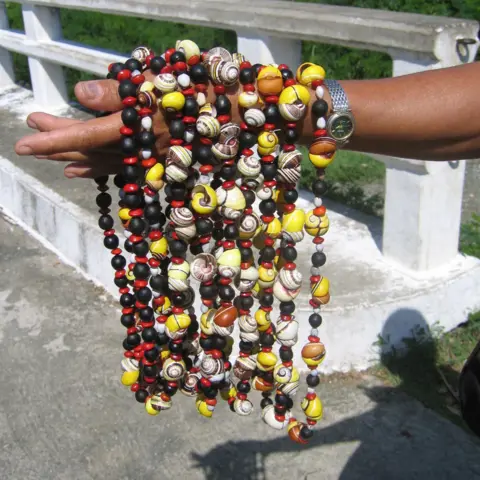 Angus Davison
Angus DavisonThe most dangerous of them is polymata sulfurosa, which is a lime green with the blue flame patterns around its coils, and a bright capillary and yellow band across its shell.
But all the polytites species are amazing and colorful, which is an evolutionary mystery itself.
“One of the reasons why I am interested in these snails is that they are very beautiful,” said Professor Angus Davison, an evolutionary geneticist at the University of Nottingham.
He said that irony is a threat to the snails.
“Their beauty attracts people who collect and trade the shells. That is why they make them different and interesting as a scientist. Unfortunately, they are endangering them too.”

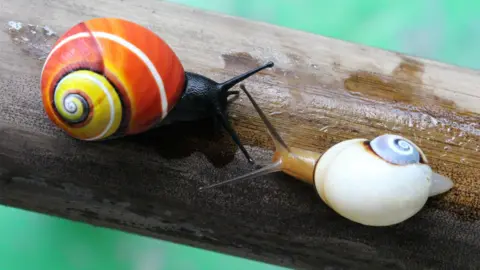 Bernardo Rage-Tur
Bernardo Rage-TurWhile searching online with Professor Davison, we found several platforms where vendors based in the UK were offering polymita shells for sale. On a site, $ 160 was being advertised in a collection of seven shells.
“For some of these species, we know that they are really in danger. So if one collected and traded them in Cuba, some species will not cause destruction.”
The shells are bought and sold as decorative items, but each empty shell was once a living animal.

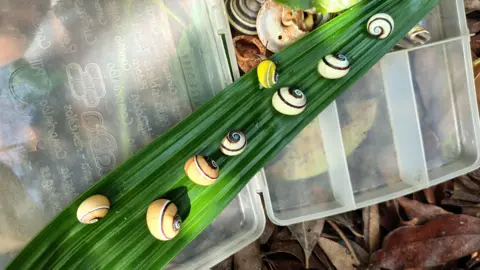 Bernardo Rage-Tur
Bernardo Rage-TurThere are international rules to protect polymita snails, but they are difficult to implement. At the International Trade Convention of dangerous species – it is illegal to remove the snails or their armor without permission. But elsewhere it is legal to sell armor.
Prof. Davisan says pressure on climate change and forest damage have affected their natural habitat in Cuba, “People collecting shells can easily tell the population in the local extinction”.

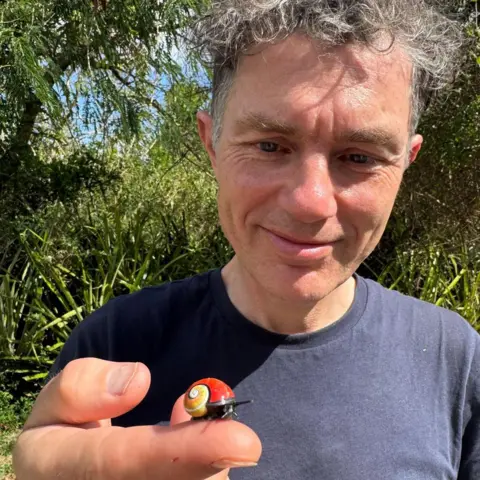 Angus Davison
Angus DavisonTo try to prevent this, Professor Davison Universald de Orientte is working closely with Professor Bernardo Raz-Tur at Santiago de Cuba, which is conservation biologists.
The goal of this international project is to understand how the snails evolved, and providing information that helps in conservation.
The attempt of Professor Ryas-Tour is probably the most challenging: working in incredible power supply and hot weather, he has brought polytime snails to his own home to escape.
“They haven’t breed yet, but they are doing well,” he told us on a video call.
“It’s challenging – we always have blackouts.”

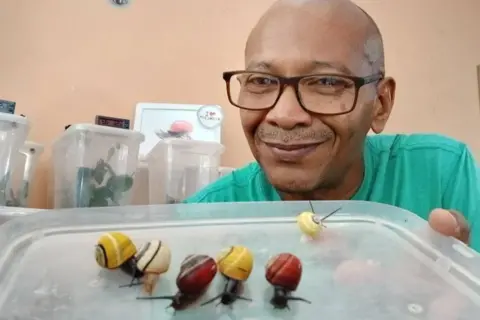 Bernardo Rage-Tur
Bernardo Rage-TurMeanwhile, genetic research is being conducted at the equipped lab in the University of Nottingham.
Here, pro. Davison and his team can place small patterns of snail tissue in the cryogenic freezer to save them. They are capable of using that material to read the genomes of animals – a biological set of coded instructions that make every snail.
The objective is to use this information to confirm how many species of use of this information, how they are related to each other, and what part of their genetic code gives them to their fantastic, unique color samples.

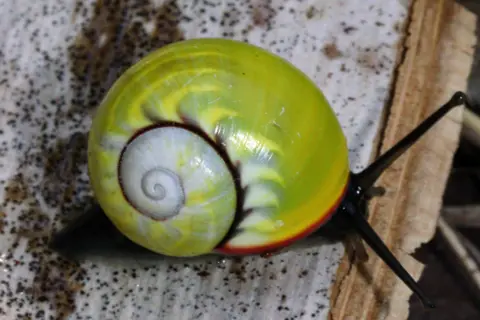 Angus Davison
Angus DavisonHopefully, they can reveal those biological secrets before buying these colorful animals.
Professor Davisan told BBC News, “Eastern Cuba is the only place in the world where these snails have been found.”
“There is skill there – where people who know the snail, love them and understand them, live and work.
“We hope we can use genetic information we can bring to contribute to their conservation.”




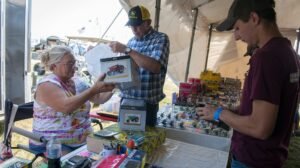







Post Comment